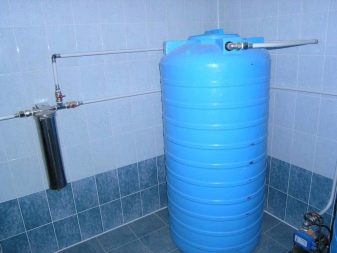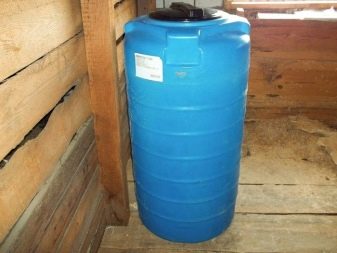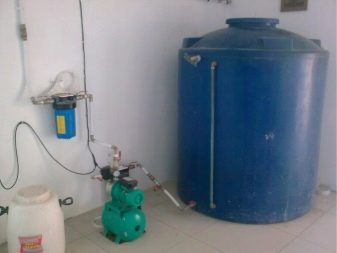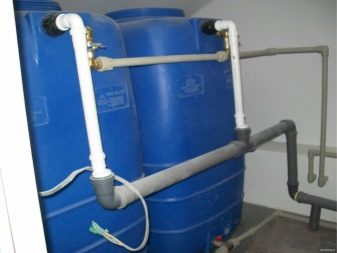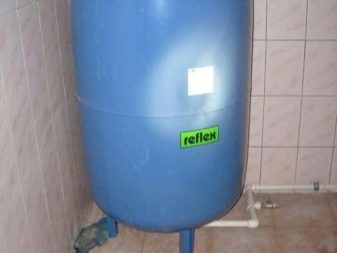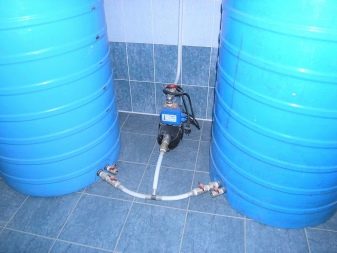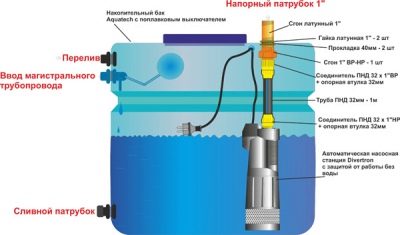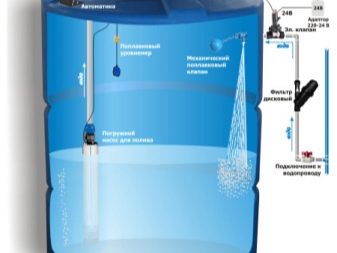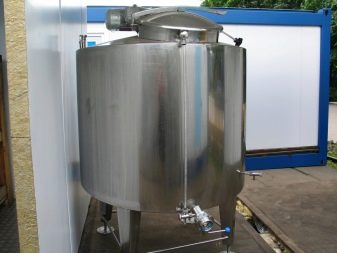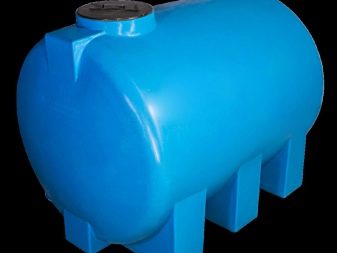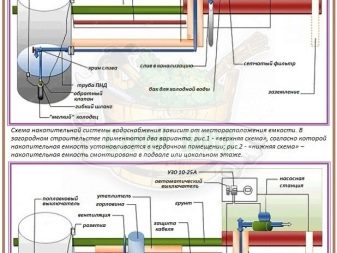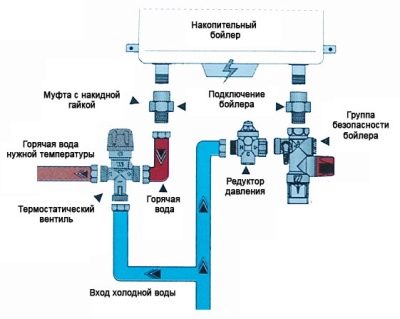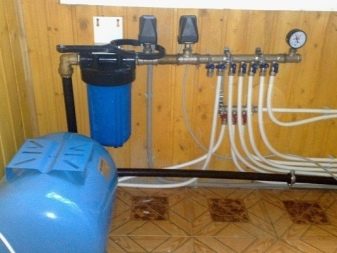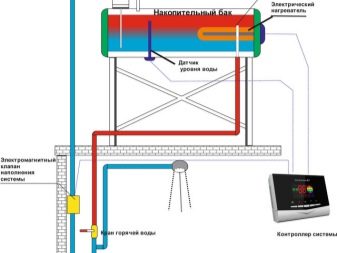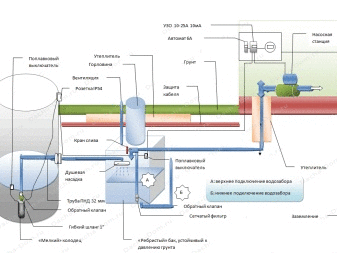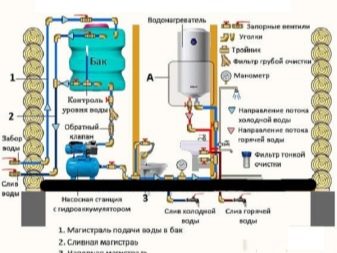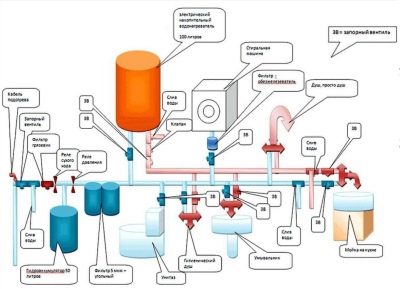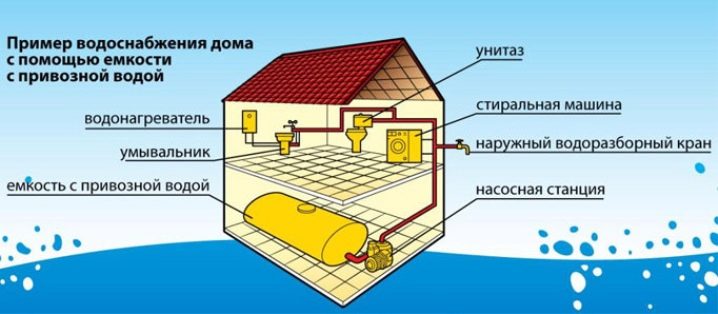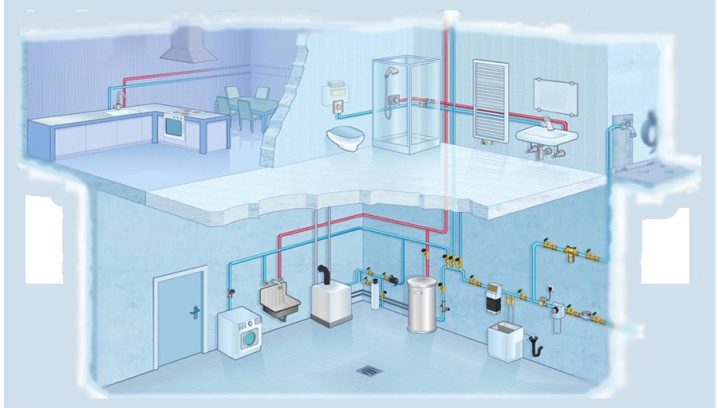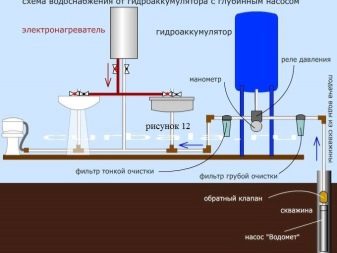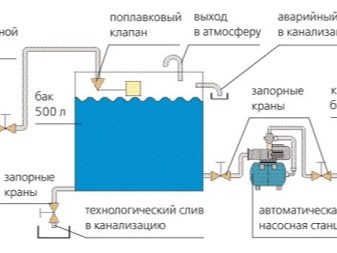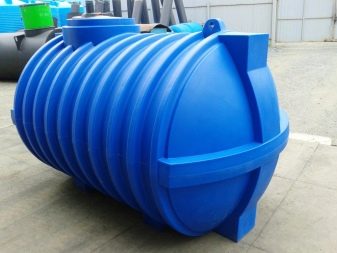Water storage tank: how to ensure uninterrupted water supply?

In the modern world, no one is surprised by the autonomous water supply system. Such designs are practical and convenient, but for their arrangement requires additional equipment.
What is it needed for?
In many cities, due to problems in the water mains and pumping substations, water is supplied to residential buildings on a schedule. Therefore, people have to store water in small containers - plastic bottles and buckets. Those who have the opportunity are offered a solution to this problem by installing a storage tank.
But this method will eliminate the problem within a short time, otherwise uninterrupted operation can be ensured only by the expansion tank. There are a lot of similar devices on the market of household goods.
In order to choose the most suitable model, it is necessary to study all the varieties of the storage tank for water supply and know their working principle.
Also, the need to install a storage tank arises in the following conditions:
- when organizing autonomous water supply, when due to the small capacity of the well it quickly becomes empty;
- when the water supply pumping station, if there are frequent interruptions of electricity.
Features and device
The storage tank maintains the required pressure in the water supply system. Most often, a closed-type membrane tank is suitable for this purpose. It comes in the form of a tank with a rubber membrane inside. The membrane, in turn, divides the container into two parts, in one - the air space, and in the other - water.
The device for water supply is used in autonomous networks of cold and hot water. In the event of interruptions in water from the main source, the storage tank will fill it from the reserves. The tank is a hollow tank, which is presented in different variations and volumes. On the tank there are input and output connections, cleaning devices - filters, ventilation and technical revision. More expensive models have pumping systems.
The water level in the tank is monitored using built-in level gauges - electronic and float. The pumping station pumps liquid from one source to the storage tank. The liquid fills the tank to a certain level, after which the valve is triggered with a float, which leads to the completion of the water intake process.
After starting the pump motor fills the water chamber. When this occurs, the reduction of the air compartment. The less air remains, the greater the increase in pressure.
After exceeding a certain rate, the pump is automatically shut off. It will turn on only when the pressure drops to the minimum value. In this case, the liquid will come from the water compartment.
The pump is turned on and off automatically.Pressure can be monitored by the integrated pressure gauge. It can be adjusted manually by selecting the optimum pressure range. The next stage is the purification and aeration of water, after which the water is sent to the water supply system while regulating the water tap.
The storage tank simultaneously performs a number of functions:
- pressure stabilization when the pump is turned off;
- protection against water hammering due to air entering into the water supply system or voltage drops;
- preservation of a certain amount of water;
- ensuring the durability of the pump.
The storage tank satisfies the need for water due to the stored fluid. In this case, the pumping system may not be involved with a small water consumption.
Species
Storage tanks are classified according to several criteria:
- capacity form: round, cylindrical, rectangular, non-standard;
- construction: open and closed;
- performance material: plastic, stainless steel, metal, polypropylene;
- internal capacity: 7, 20-30, 50 liters, as well as large containers of 80, 100, 200, 250, 500 l;
- mission: for hot water supply with electric water heaters, for cold water supply, for heating and irrigation systems;
- method of installation: placement vertically and horizontally, indoors and underground, wall mounted.
Purpose
The main purpose is to collect and store water and other food, technical non-aggressive liquids.
Form and volume
When calculating the capacity of the storage tank, the following factors should be taken into account.
- Fluid flow rate: everyone consumes water in different ways, so you cannot advise specific values. For approximate calculations, you can take the average values.
- The performance of the main water source. Much depends on the amount of fluid that comes from the source.
For underground storage tanks a prerequisite is the round or ribbed shape of the tank.
Materials
The storage tank is made of stainless steel or food grade plastic. The material must be of high quality, otherwise the drinking water will contain various toxic chemical elements harmful to human health.
Mounting methods
Installation of the storage tank is carried out in stages:
- preparation of the basis under water capacity;
- installation of a storage tank on the base;
- installation of float valve;
- making holes for pipelines;
- insert shut-off valves;
- installation of the overflow pipe, which is discharged into the sewage system and fixed to the walls of the tank;
- the attached tank is checked for tightness;
- tank insulation using polystyrene or mineral wool.
Let us consider in more detail the design features of the tank.
- The suction nozzle must have a float valve. In the event that fluid is pumped out of the well, a float switch is used.
- If the float breaks below the suction nozzle, the overflow pipe that leads to the sewer system is cut in.
- A filter element is installed on the suction side. They are available in several types: mesh, centrifugal filter-pumps and cyclones. The strainer is installed when pumping extremely pure water, and others for dirty water. Mesh is recommended to install on the discharge line.
- In tanks with opaque walls, level gauges are installed to determine the remaining volume of water.
- Care should be taken to remove sludge. Underground tanks are cleaned through the upper hatch.The tanks installed at the top, provide drainage pipes that are cut at the bottom of the vessel.
- The tank is filled with a shower head or a watering can to avoid mixing pure water with sediment.
- At the top of the tank, a vent line or breathing tube is provided. It is bent in such a way that the inlet is located at the bottom. At the entrance of the breather set grid to prevent blockages from entering the tank.
Criterias of choice
If the private house has several floors, you can install a storage tank in the attic. This will allow to do without installing a pumping system. On the other hand, for a better head, you will have to set the tank at a certain height. It also raises the question of installing water-heating equipment so that the liquid does not freeze in winter.
When choosing a tank for water supply, it is first necessary to pay attention to its characterizing factors. At selection of capacity of optimum capacity consider the number of people who will consume water. It is equally important to know the number of water intakes in the apartment: shower, faucets, household appliances. Also, we should not forget about the probability of using water simultaneously by several consumers.
Attention must be paid to the maximum number of stop and start cycles in 60 minutes for the pump.
Water connection
Connection to the water supply system is carried out in several stages. When pumping fluid from a well or a well, a pump is installed on the tank. Its appearance depends on the depth of the water source:
- less than 8 meters - superficial;
- 9-20 meters - surface pump with the presence of an ejector;
- more than 20 meters - submersible.
A check valve is installed in the pump suction line. If the tank has a large capacity, planks will be laid under it, on which the weight load of the tank will be distributed.
Installation of the float valve is as follows:
- the washer is put on the valve stem, then attached to the inlet;
- a plate, a washer and a nut are installed inside the shank;
- outside of the shank screw adapter, which is attached to the discharge pipe.
If the storage tank is installed at the top, the work is completed after connecting to the sewer and plumbing system, as well as the installation of the water heater.In case of an underground installation, it is necessary to connect a pumping system with a membrane type battery. The pump system must be protected against dry running.
Important nuances
The storage tank is installed on a prepared base of concrete, metal frame of profiled pipe. The base must support the weight of the container filled with liquid. The entry nozzle is made of any diameter, water is pumped under pressure. The diameter of the outlet for the output should be twice as large.
Installation of insulation material will only slow down the cooling water in the tank.
In order for the liquid not to freeze, during installation of the storage tank, a system for heating the pipes and the storage tank is used.
System diagrams
The scheme of the water supply system with an underground reservoir is used with a small debit of wells and wells, or with a small volume of liquid. In this case, an intermediate plastic tank is mounted between the consumer and the source of the fluid. The capacity of the tank is in the range of 200-1000 liters, depending on the water needs of residents.The daily volume of water consumed per person on average is about 200 liters.
The tank is installed both inside the house and in the yard, in the soil. Installation underground has the following advantages:
- the possibility of using large-capacity tanks;
- does not occupy big space;
- does not require additional heating in the winter season.
The underground tank must be ribbed, round, which ensures mechanical strength from the pressure of the soil. An underground tank is heavily flushed. If the suction nozzle is inside, a small amount of fluid will always remain there. This problem is solved by connecting the supply nozzle through the tank wall. But at the same time it is necessary to install on the suction mesh filter.
The scheme of the water supply system with a storage tank inside the room looks much simpler than the underground water supply system. The tank, located inside the house, is easy to clean and wash. Additional water pressure can be provided by raising the tank to a certain height.
A valve should be provided in the tank for air suction, discharge of fluid into the sewage system and pipeline backup drain into the sewer.An aerator is often installed on the equipment, and water flows through a watering can. This allows you to improve the quality of the fluid. Also in the tank can be positioned large crushed stone. This will improve antimicrobial protection and water quality.
Centralized water supply
To connect the storage equipment is very important to have a check valve at the entrance to the room. It will prevent fluid from flowing back into the pipeline. With the upper connection, the storage tank is installed in the attic or under the ceiling. It should have an upper pipe for the supply of liquid, a little higher - a fitting for discharge into the sewer system, in the lower part - for water intake.
Outlet must be fitted with a stop valve. It is lowered into the plumbing system where it is connected using a tee. For water consumption, you just need to turn the valve on the outlet.
The bottom connection is similar to the top. But at the outlet nozzle is installed pumping station to increase the pressure. Before each consumption of liquid it is necessary to include it.
At the bottom connection of the membrane type tank, work is carried out with only one pipe, which is connected to the plumbing system through a tee.Before consumption, you should adjust the pressure in the air compartment, it is done only in accordance with the manufacturer's instructions.
Autonomous
As with centralized water supply, the connection is made in several ways.
- Water tower. The tank is installed at a height of about 20 meters in the attic or a special tower. Liquid from the pump will flow immediately into the tank, and from it into the bathroom, into the kitchen. The required pressure arises due to elevation differences between the level of the liquid and the mixer tap.
- With the lower connection tank is installed on the same level with the pump or on the lower floor. Filling with water from the well occurs after turning on the pump.
- The membrane type accumulator tank is installed after the pump and non-return valve. In the absence of pressure in the system, the fluid will flow from the storage tank.
Professional Tips
- When choosing a water tank, you should pay attention to the models of famous manufacturers. Cheaper options can be costly. It is especially important to take into account the quality of rubber, which is the basis of the membrane.The duration of the storage tank operation and the quality of the water depend on this material.
- When installing the storage tank yourself, you need to take care of the possibility of dismantling the attached pipe for subsequent repair or replacement.
- Equally important is equipment grounding, this will avoid electrical corrosion. The make-up line is connected to the circulating circuit of the system.
For information on how to ensure uninterrupted water supply to the storage tank, see the following video:
